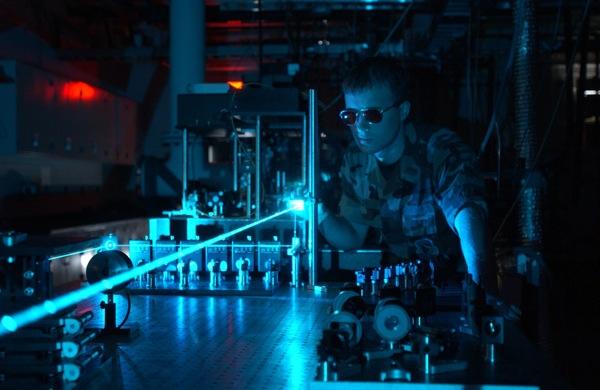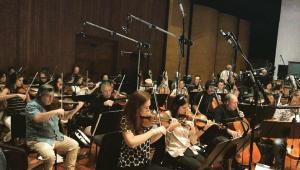Whatever happened to the Red laser projector, from the camera maker. It was previewed with a remote laser light source through fiber optics. It was to have the ability to add multiple laser modules to increase light output. It was supposed to be available in a home version for >$10k.
It's a Laazzeer...Projector

Lasers can also be used as a light source for digital projection. While this is still under development, we’re likely to see it first in movie theaters. Lasers can not only produce a much brighter image—which can help overcome the dimness of 3D presentations—but also offer cost benefits to theater owners. Conventional xenon lamps are expensive to replace, and have a useful life of perhaps 1000 hours (some theaters try to stretch this as much as possible, often with negative effects on picture quality). A laser light source can stretch this by at least twenty-fold or even more. While replacement lasers will likely be significantly more expensive to early on, they’ll still be cheaper per hour of use. Another possible cost saving might come from using a centralized “light farm,” with the light from a single remotely located bank of lasers routed to multiple projectors via fiber optics.
Laser projectors, as contemplated for digital movie presentations, do not shine laser beams directly on the screen, as in a laser light show. Instead, they’re used simply as a light source for familiar types of digital projectors, such as DLP and LCoS. Lasers of appropriate red, green, and blue wavelengths are combined to produce white light. The latter is then diffused sufficiently to flood the imaging chips; it’s those chips that produce the picture, as they do with today’s lamp-based light sources.
Last spring a laser-lit DLP projector was quietly installed for a week long public tryout at an AMC theater in Burbank, California—the technical center hub of the Hollywood movie industry. I was able to attend for a 3D presentation of G.I. Joe: Retaliation, but was less impressed than others with whom I spoke afterwards. Some of my reservations—a rather coarse, drab looking picture—may well have been in the source. The movie itself was also a chore to sit through, which didn’t help!
Last week Laser Light Engines, a company at the forefront of laser projection R&D, held industry-only demos, also in Burbank, of its current laser light technology. The session I attended was 2D only, but other sessions included 3D in the mix. In side-by-side comparisons, xenon-lit and laser-lit DLP projectors were barely distinguishable on two different screens (white and a larger, higher gain silver). The higher brightness capability of the laser projector had also been dialed down to make for a more uniform comparison with the inherently dimmer xenon projector.
I was impressed. The color and resolution were beyond criticism, though as is common in theatrical digital projection the black level on both projectors was mediocre. The presentation was initially single blind, but as with most of the audience I guessed correctly which projector turned out to be the laser. But that wasn’t because the laser was inferior. It wasn’t. Apart from a nagging laser issue, a noise-like artifact called speckle, there wasn’t much to choose from between the two.
Laser Light Engines is working on the speckle problem, and lasers may be coming to a theater near you sooner rather than later. Laser Light Engines hopes to make this possible by producing upgrade packages to make its the laser light engine compatible with currently installed projectors. The latter is vital, as many theater owners have only recently paid six figures for new projectors they won’t want to toss for an entirely new setup.
And what of home theater laser projectors? No one is talking much about them as yet, but I’d expect to see them first in very high priced models. Affordability will be ultimately be driven by business projectors (which dominate the non-theatrical projector market), where heavy use makes lamp replacement a significant cost consideration. But once the R&D is amortized, affordable home theater designs might not be far behind.
- Log in or register to post comments


What about this laser short-throw front projector from LG? http://www.ebay.com/itm/LG-100-Laser-SmartTV-Projector-HECTO-/3212683789...
It doesn't say anything about 3D & it's $8,000 , but apparently has a million to 1 contrast ratio and an ANSI 150 nit brightness on a 100" diagonal screen. It doesn't appear to be able to do any different sizes of screen. How about a review of this thing?
































































